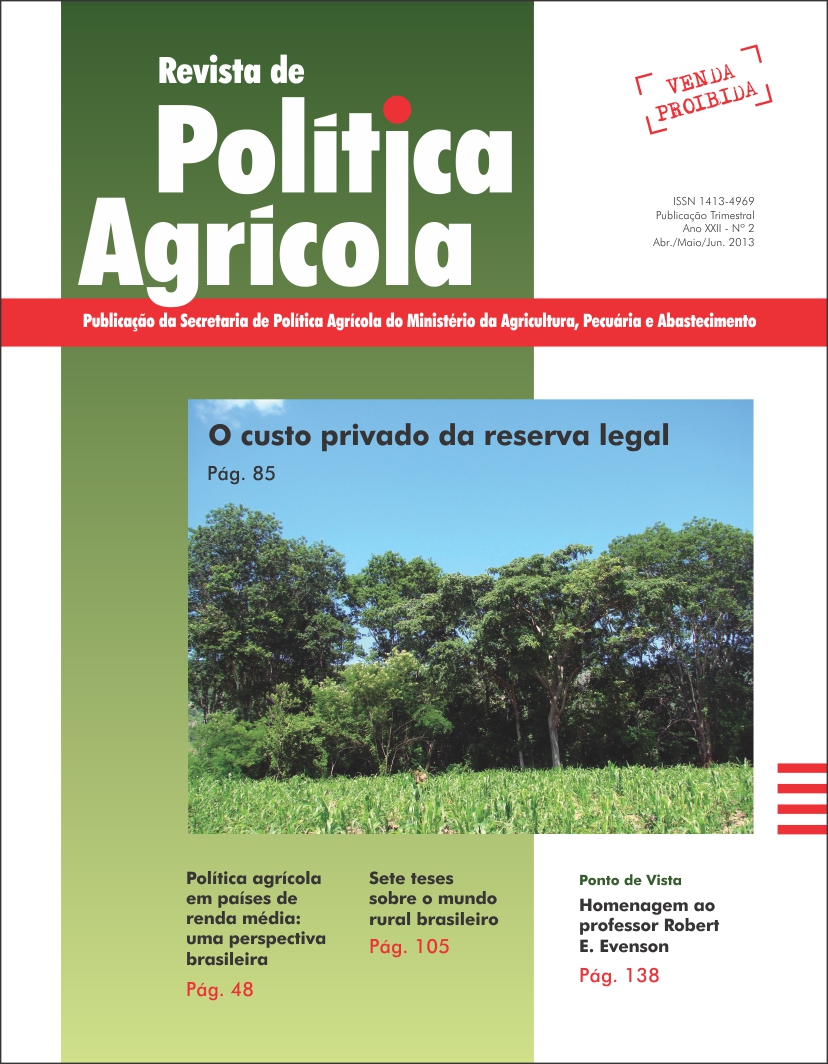Countryside inequality in the view of the 2006 census of agriculture
Keywords:
technical assistance, income inequality, Gini index of gross income, rural poverty, modern technology.Abstract
This paper analyzes the inequality by the Gini index of gross income of 4,400,527 establishments located in 5,036 municipalities. The establishments were defined in two area groups (in hectares): ≤ 100 and > 100. The total Gini index by municipality was also calculated. The paper also used a non-parametric approach based on ranks to evaluate the influence of land, labor and technology in the Gini index. The regional Gini indexes analysis shows that technology is the factor that explains income disparities, especially in the Northeast, the Southeast and the South regions of Brazil. Thus, just distributing land is not the solution to reduce poverty in the countryside. According to 2006 census of agriculture, there are 3.9 million establishments that are not included in the modern agriculture, due to the imperfections of markets for inputs and products, and technical assistance, besides other factors. Without public policies that strengthen and improve the public rural extension, stimulate private technical assistance – even rewarding their work with public funds –, and intensify measures that seek to make markets more efficient, soon (countryside) the rural areas will be empty. The current situation requires urgent measures.Downloads
Published
2013-07-11
How to Cite
Alves, E., Souza, G. da S. e, & Rocha, D. de P. (2013). Countryside inequality in the view of the 2006 census of agriculture. Revista De Política Agrícola, 22(2), 67–75. Retrieved from https://rpa.sede.embrapa.br/RPA/article/view/308
Issue
Section
Artigos Científicos


